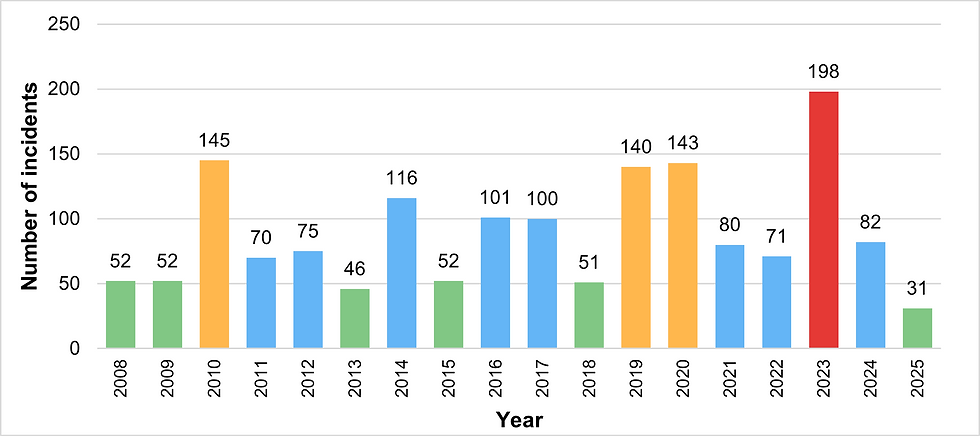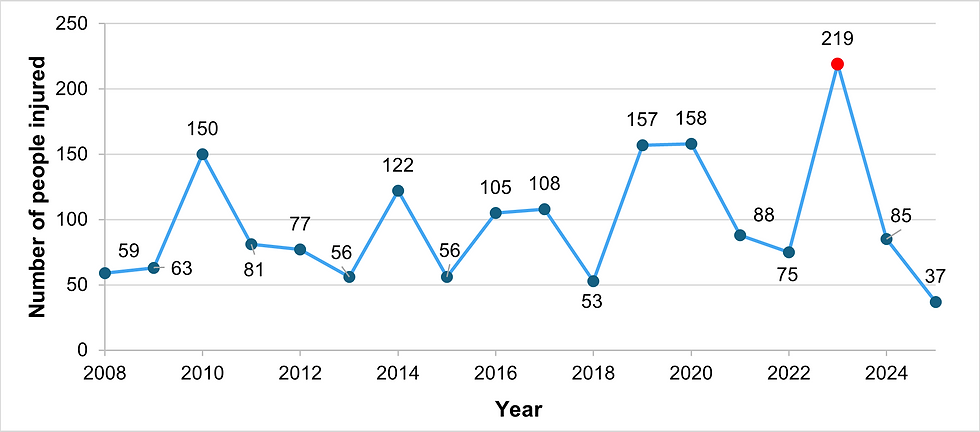When Bears Come Knocking: Japan's Growing Wildlife Crisis
- Arockia E J Ferdin

- Aug 31, 2025
- 3 min read
On a quiet Sunday morning last week, a 69-year-old man set out for his regular jog in Akita Prefecture in northeastern Japan. He never made it home. Instead, paramedics found him bleeding from head wounds from a bear attack. It was the eighth such incident this year in Akita Prefecture alone. This latest attack underscores a disturbing reality of frequent encounters with bears. Bear attacks from both species in Japan reached an all-time high in the 2023 fiscal year, and 2025 is proving no different.
Two Giants in a Shrinking World
Japan is home to two bear species—the Asiatic black bear (Ursus thibetanus) and the brown bear (Ursus arctos)—and they are Japan's largest land mammals. The massive brown bear roams only Hokkaido, the northernmost island, whilst the smaller, shy Asiatic black bear primarily inhabits Honshu, with a few populations clinging to survival in Shikoku. In Kyushu, black bears have been locally extinct, a stark reminder of what happens when human development overwhelms wildlife habitat.
Bears aren't just pests or vermin, they are ecosystem engineers as they play a crucial role as seed dispersers, helping to maintain the forest ecosystems that define Japan's mountainous landscape. However, increasingly, their world and ours are colliding with devastating consequences.
The Numbers Tell a Stark Story
New government data tracking human-bear incidents from fiscal years 2008 through 2025 reveals the scope of this escalating crisis. Annual bear attack incidents in 2023 exploded to a record-breaking 198 incidents. The data reveals concerning spike years: 2010 hit 145 incidents, followed by back-to-back highs of 140 and 143 incidents in 2019 and 2020.

Similarly, 219 injuries were reported in 2023 alone—by far the worst year on record. This followed 150 injuries in 2010, then back-to-back crisis years of 157 and 158 injuries in 2019 and 2020. The 2025 data, showing 37 injuries already through just six months, suggests another potentially dangerous year ahead.

A Perfect Storm of Factors
The surge in human-bear conflict stems from a perfect storm of ecological and social changes. Japan's rural exodus has seen over 8.5 million hectares of farmland abandoned since the 1970s. As these lands rewild, Japan has lost its traditional satoyama—buffer zones between forests and farmland that once kept bears at bay.
Climate change compounds the crisis further. During "mast failure years," when trees produce fewer acorns and nuts, hungry bears venture into farms and towns seeking food. Most alarming is the bears' behavioural shift, as encounters now occur in urban and suburban areas. The 2021 case of a brown bear entering Sapporo and injuring four people along with recent bear attacks in major cities across Japan—including Tokyo—epitomise this dangerous trend.

An Uncertain Future
As rural Japan continues emptying due to declining population trends and aging hunters on the front line, whilst bear populations recover, conflicts will likely intensify. The 2025 data already suggests another dangerous year ahead. Japan's past experience with wolf species that became extinct 100 years ago provides a stark reminder that bears may face the same fate as wolves. Bears are conservation-reliant species, and the path forward requires integrated approaches that balance biodiversity conservation with rural revitalisation and public safety.
With the aging population shrinking, Japan is increasingly relying on technological interventions, such as the use of "monster wolves" to fend off bears. Both bears and humans stand at a crossroads, and the choices made now will determine whether Japan can achieve coexistence or face an escalating cycle of conflict that may lead to the local extinction of bears.



Comments